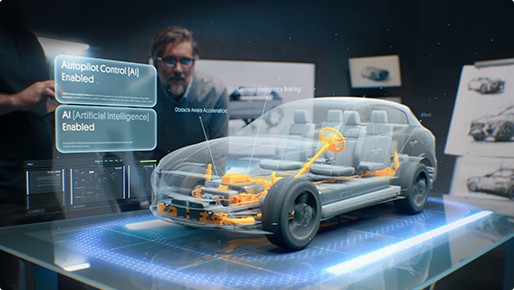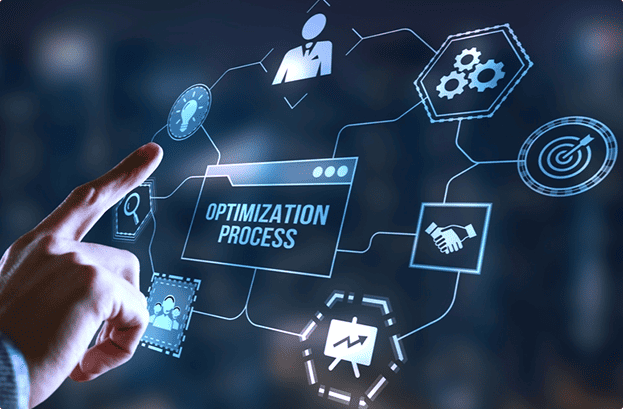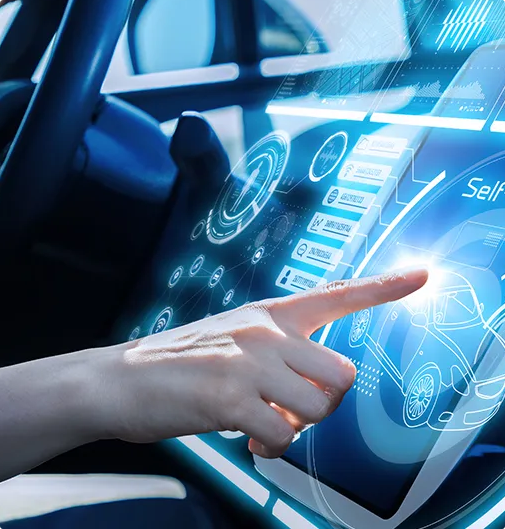In the constantly evolving world of automotive sales, one digital frontier has emerged as the key game-changer, social media. Automotive marketing has undergone a profound transformation, fueled by the widespread adoption of platforms like Facebook, Instagram, Twitter, and LinkedIn. Today, car dealership owners can no longer afford to ignore the undeniable influence of social media on consumer choices.
This blog post aims to underline social media’s weight in shaping modern automotive marketing strategies and provide car dealers with a roadmap to harness its full potential. We will delve deep into social media automotive marketing, dealer social ad management, and how these alter automotive sales dynamics.
Ready to fasten your seatbelts and join us on this informative journey? Let’s shift into gear and hit the gas!
The Power of Social Media in Automotive Marketing
A. Social Media Automotive Marketing: A Modern Revolution
Once upon a digital era, a car dealership’s marketing efforts would primarily involve billboard ads, TV commercials, and perhaps a catchy radio jingle. The spotlight has undeniably shifted towards social media, creating a paradigm shift in automotive marketing.
A study by MDG Advertising highlights that approximately 70% of car buyers who used YouTube were influenced by it, underscoring social media’s impact.
B. Automotive Sales in the Age of Digital Interaction
In the age of digitization, where everything from groceries to gadgets is a click away, automotive sales are no exception. Social media has proven to be a potent tool for car dealerships to reach potential customers, nurture leads, and close sales.
According to Facebook 80% of car shoppers turn to Facebook in their car-buying journey. This change is all about offering a personalized, interactive, and engaging customer experience.
Implementing Dealership Social Media Marketing
A. Social Media Automotive Marketing: A Modern Revolution
In the race to keep up with the digital transformation, it’s not just about participating; it’s about winning. And the first step towards that victory is establishing a solid dealership social media presence. The initial steps might seem daunting, but they’re crucial to ensuring your dealership gets off to a roaring start online.
Choose the right platforms
Develop a content strategy
(i) Identify your audience
Every successful marketing strategy begins by understanding your target audience. Analyze their preferences, behavior, and social media platforms they use the most. Knowing where your potential customers ‘hang out’ online will help you tailor your efforts accordingly.
(ii) Choose the right platforms
Not all social media platforms are created equal, nor should your dealership’s presence be. For instance, Facebook and Instagram might be more effective in showcasing your latest models with attractive visuals, while LinkedIn could be the perfect platform for business-related updates and partnerships.
(iii) Develop a content strategy
Content is the fuel that drives your social media engine. Be it engaging car review videos, customer testimonials, or educational posts about car maintenance – your content should be informative, engaging, and relevant to your audience’s interests.
(iv) Monitor and engage
Social media is a two-way street. Monitor your audience’s responses and engage with them regularly. This could mean responding to comments, answering queries, or even handling criticism constructively.
B. Effective Dealer Social Ad Management
Even the most powerful vehicle needs regular fine-tuning to perform optimally, and your social media ads are no different. Effective dealer social ad management optimizes your advertising campaigns for maximum impact and ROI.
Here are some best practices for managing your social media ads effectively:
(i) Set clear objectives
Before you set up any campaign, determine your goal. This could range from increasing brand awareness to generating leads or driving website traffic.
(ii) Target wisely
Use social media platforms’ demographic and psychographic targeting features to reach your ideal customers. Precision targeting can significantly enhance your ad effectiveness and reduce wasted spend.
(iii) Track performance
Regularly monitor your ad performance using built-in analytics tools. This will help you understand what’s working and what isn’t, enabling you to tweak your campaigns for better results.
(iv) Experiment and optimize
Don’t hesitate to test different ad formats, content, and targeting parameters. Continuous experimentation and optimization are the keys to improving your ad performance.
Remember, social media marketing is not a one-size-fits-all solution. It requires constant learning, adjusting, and optimizing. But your dealership can reap significant benefits with the right approach and strategies. Next, we’ll explore how social media influences consumer choices in the automotive industry. Stay tuned!
Influence of Social Media on Consumer Choices in the Automotive Industry
A. How Social Media Shapes Consumer Behaviour in Car Buying
In today’s digital-driven world, the journey from “just browsing” to “let’s buy” often involves numerous pit stops at social media platforms. A survey by Sprout Social revealed that 74% of consumers rely on social networks to guide their purchase decisions. For car buyers, this could mean everything from checking out reviews, engaging with brand posts to discussing options with their social circles.
The buying process is no longer confined to stepping into a dealership and haggling with a salesperson. Instead, it’s a dynamic, multi-platform journey where consumers seek reassurance, validation, and interaction. Therefore, maintaining an active and engaging social media presence is not a nice-to-have; it’s a must-have for dealerships.
B. Utilizing Consumer Data for Targeted Automotive Social Marketing
What’s the secret sauce for creating compelling social media content that resonates with your audience? The answer lies in leveraging consumer data. Deep-diving into your audience’s likes, dislikes, online behavior, and engagement patterns can help tailor content that strikes a chord.
For instance, Facebook’s Audience Insights provides valuable information about your audience’s demographics, page likes, location, and activity. This data can be leveraged to design targeted ad campaigns that hit the bull’s eye.
Moreover, the power of retargeting cannot be underestimated. Have you ever browsed a car model online, only to see ads for the same model popping up on your social media feeds later? That’s retargeting in action! By placing a pixel on your dealership’s website, you can retarget website visitors with specific ads on social media, increasing the chances of conversion.
By effectively utilizing consumer data, dealerships can take their automotive social marketing to new heights, paving the way for more personalized and engaging interactions with potential customers.
Next, we’ll look at some real-life case studies of successful social media automotive marketing campaigns and the lessons we can learn from them. Onward we go!
Case Studies: Successful Social Media Automotive Marketing Campaigns
A. Innovative Automotive Marketing on Social Media
In the world of automotive social marketing, creativity, and innovation drive success. Here are a few standout examples of dealerships that have hit top gear with their social media campaigns.
(i) Mercedes Benz’s #MBPhotoPass (Instagram)
Mercedes Benz set the gold standard for user-generated content with its #MBPhotoPass campaign. They invited Instagram influencers to take over their account and share their unique experiences with Mercedes vehicles. The result? A plethora of visually stunning, authentic, and engaging content significantly boosted the brand’s Instagram engagement. Check out the campaign here.
Key takeaway: Involve your community. User-generated content can be a powerful tool for building trust and engagement.
(ii) Ford’s Fiesta Movement (YouTube)
Ford’s “Fiesta Movement” campaign was a pioneer in the world of social media marketing. They gave 100 social media influencers a Ford Fiesta each for six months and asked them to complete monthly missions, recording their experiences on YouTube. This resulted in high-quality, engaging content that reached millions and created a buzz around the car before its launch. Watch some of the missions here.
Key takeaway: Social media influencers can be powerful allies. They can help reach new audiences and add a layer of authenticity to your campaigns.
(iii) Audi’s #WantAnR8 (Twitter)
When a tweet from an Audi fan saying, “#WantAnR8” went viral, Audi seized the opportunity and turned it into a full-blown Twitter campaign. They invited other users to tweet using the same hashtag for a chance to drive an R8 for a day. The campaign was a massive success, generating a significant spike in Twitter engagement and brand buzz. Read more about the campaign here.
Key takeaway: Listen to your audience. Seizing opportunities from user interactions can result in successful, organic social media campaigns.

Future Trends: Automotive Social Marketing in the Coming Years
A. Predicting the Evolution of Dealership Social Media Marketing
Like any other, the automotive industry doesn’t exist in a vacuum. It evolves in response to broader trends in technology, consumer behavior, and societal changes. As we look to the future, several trends seem likely to shape the landscape of dealership social media marketing.
The Rise of Social Commerce
Social commerce – the ability to make a purchase directly within a social media platform – is growing rapidly. Platforms like Facebook and Instagram have already introduced “Shoppable Posts,” making it easier than ever for consumers to go from discovery to purchase without leaving the app. For car dealerships, this could mean leveraging social media not just for marketing and engagement, but for direct sales as well.
Increased Use of AI and Chatbots
Artificial Intelligence (AI) and chatbots are revolutionizing customer service, providing instant, automated responses to consumer queries. This trend is likely to grow, helping dealerships provide real-time support and personalized engagement to potential customers.
Video Content Dominance
If a picture is worth a thousand words, a video could very well be worth a thousand sales. Video content has been gaining traction on social media, and this trend shows no sign of slowing down. Dealerships can harness this by producing engaging, informative, and persuasive video content.
The Growth of Influencer Marketing
As demonstrated by the case studies earlier, influencer marketing can be highly effective in creating buzz and reaching new audiences. As trust in traditional advertising continues to decline, influencer marketing will likely grow in importance.
While these are some of the key trends that we foresee, the world of social media is highly dynamic. Dealerships should remain flexible and adaptable, ready to leverage new opportunities.
Conclusion
In automotive marketing, social media is no longer a luxury – it’s a necessity. The ability to connect directly with consumers, showcase products, and influence consumer choices has made it a vital tool in the marketer’s arsenal. By leveraging the power of social media, understanding consumer behavior, and staying abreast of the latest trends, dealerships can drive their marketing efforts to new heights of success.























































